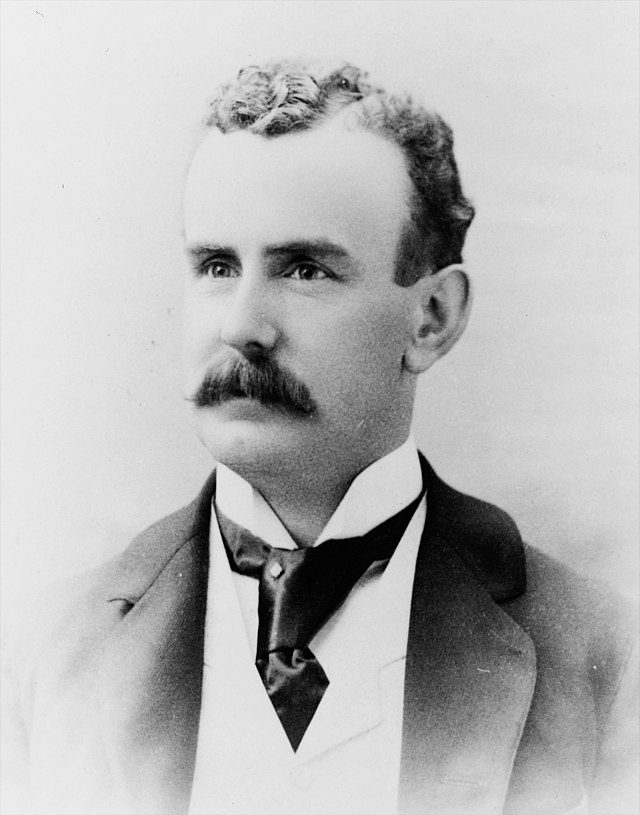Welcome to the fascinating global of Lenox Corporation, an American production titan with a legacy etched in beauty and craftsmanship. Founded in 1889 using the visionary Walter Scott Lenox as Lenox’s Ceramic Art Company, the company’s journey unfolds as a captivating story of innovation and resilience. Breaking away from the conventional norms of its time, Lenox commenced as an artwork studio, crafting particular artwares that stuck in the eye of artwork enthusiasts.
The prestigious Smithsonian Institution showcased Lenox’s products in 1897, marking the start of a legacy that might ultimately make it the most prestigious American maker of tableware within the 20th century. This blog will guide you through Lenox’s historic evolution, its contribution to American tableware, the challenges it faced, and the long-lasting legacy that persists within the 21st century. Join us as we get to the bottom of ‘The Legacy Unveiled: Everything You Need to Know About Lenox Corporation.’
Historical Journey of Lenox Corporation:
The ancient adventure of Lenox is a charming saga that unfolded over more than a century, characterized using innovation, creative vision, and a commitment to craftsmanship. Established in 1889 via Walter Scott Lenox in Trenton, New Jersey, Lenox’s Ceramic Art Company commenced as an unconventional artwork studio as opposed to a conventional factory. This one-of-a-kind approach set Lenox aside, focusing on the advent of 1-of-a-type artwares.
With simply eighteen personnel, Lenox’s preliminary foray into American art pottery quickly garnered attention, mainly to the show of its merchandise at the prestigious Smithsonian Institution in 1897. This marked a turning factor, propelling Lenox into the spotlight and laying the inspiration for its artistic legacy.
The evolution from a modest artwork studio to a full-size participant in the tableware enterprise showcases Lenox’s adaptability and dedication to satisfaction. Over the years, the corporation extended its repertoire, embracing mass production at the same time as retaining the creative essence that described its early years.
The journey of Lenox Corporation reflects not only the evolution of the organization but also the dynamic changes within the industry.
Lenox’s Contribution to American Tableware:
Lenox’s contribution to American tableware is not anything quick or remarkable, earning it prominent fame as the most prestigious American maker of tableware for a big part of the 20th century. This phase of our journey into Lenox’s legacy explores the pivotal role the organization performed in shaping the panorama of American eating elegance.
As Lenox rose to prominence, it became synonymous with sophistication and style. Notably, the company crafted numerous China services commissioned for the White House, solidifying its reputation as a symbol of American beauty at the best tiers of strength. The presence of Lenox tableware in the White House underscored its remarkably pleasant and timeless layout, similarly improving its attraction amongst clients.
The White House commissions were no longer merely transactions; they have been a testament to Lenox’s dedication to excellence and its recognition as a purveyor of the greatest tableware. The craftsmanship and interest in elements exhibited in those commissions reflected the center values that Lenox delivered to each piece it created.
By the year 2020, Lenox held the distinction of being the last enormous producer of bone china inside the United States. The precise mixture of lifestyle and innovation placed Lenox as a stalwart inside the American tableware enterprise, offering clients no longer just practical portions but works of artwork that embellished dining tables across the kingdom.
Lenox Brands: Dansk, Reed and Barton, Gorham, Oneida:
Lenox Corporation’s effect extends past its eponymous logo, encompassing a numerous portfolio of subsidiary brands that contribute to the richness and variety of the tableware industry. Let’s take a better look at these awesome brands – Dansk, Reed and Barton, Gorham, and Oneida – all with their specific identity and contributions to the legacy of Lenox.
Dansk: Innovating Tableware Design:
Dansk, an emblem beneath the Lenox umbrella, is famend for its innovative and modern-day designs. Since its inception, Dansk has been a trailblazer inside the global of tableware, introducing fresh and contemporary aesthetics to dining settings. With a focus on pushing innovative boundaries, Dansk appeals to those looking for tableware that mixes functionality with present-day layout, further increasing Lenox’s footprint inside the industry.
Reed and Barton: Legacy of Silverware Excellence:
Reed and Barton, any other distinguished emblem within the Lenox circle of relatives, boasts a wealthy legacy in silverware excellence. Known for its craftsmanship and undying designs, Reed and Barton had been a staple in households for over a century. From flatware to serving portions, Reed and Barton’s dedication to exceptional subculture aligns seamlessly with the overarching values of Lenox Corporation.
Gorham: Exquisite Silver Products:
Gorham, a call synonymous with brilliant silver merchandise, enhances Lenox’s status as a frontrunner in the tableware industry. With a history courting lower back to the early nineteenth century, Gorham’s commitment to craftsmanship and excellence has made it a relied-on call in silverware. The acquisition of Gorham reinforces Lenox’s determination to provide a diverse variety of merchandise that caters to various tastes and alternatives.
Oneida: Contemporary Edge in Tableware:
Oneida, a modern-day logo underneath the Lenox umbrella, brings a current and elegant part to the tableware marketplace. With a focus on blending capability and aesthetics, Oneida resonates with a younger and fashion-centered target audience. This addition to the Lenox portfolio ensures that the company remains at the forefront of evolving patron options, showcasing its adaptability in an ever-converting market.
Lenox’s Artistic Heritage:
Lenox Corporation’s journey is deeply intertwined with its artistic historical past, a legacy that has evolved from its roots as an art studio to becoming a worldwide logo synonymous with beauty and craftsmanship. This segment of our exploration delves into the rich tapestry of Lenox’s artistic adventure, tracing its origins and inspecting the impact of its background on present-day designs.
The Art Studio Beginnings:
Founded by Walter Scott Lenox in 1889 as Lenox’s Ceramic Art Company, the organization started as an art studio in place of a conventional factory. This distinct approach marked Lenox’s commitment to generating no longer simply tableware but one-of-a-type artware. The emphasis on artistic expression and creativity laid the foundation for a legacy that would go beyond conventional barriers.
Smithsonian Institution Recognition:
Lenox’s artistic prowess obtained early popularity whilst its products had been displayed at the Smithsonian Institution in 1897. This marked a pivotal moment, as Lenox’s unique artwares captured the attention of art fanatics and creditors. The Smithsonian exhibition no longer best confirmed Lenox’s artistic benefit, but also set the level for its emergence as a considerable participant in international tableware.
Evolution from Art Studio to Mass Production:
Over the years, Lenox Corporation converted a small artwork studio into a worldwide brand embracing mass manufacturing. While keeping its dedication to artistic expression, this evolution allowed Lenox to bring its craftsmanship to a broader target audience. The transition showcased Lenox’s capability to conform to changing market dynamics while maintaining the essence of its artistic history.
Impact on Modern Designs:
Lenox’s artistic history continues to steer contemporary designs. The employer’s commitment to satisfaction and aesthetics can be visible in its diverse product traces, from classic and timeless portions to the ones reflecting modern-day developments. Whether it is a vintage-inspired china set or a swish, current serving platter, Lenox’s creative legacy remains a force in shaping its product services.
From One-of-a-Kind to Global Brand:
The journey from crafting one-of-a-kind artware to becoming an international brand displays Lenox’s enduring commitment to creative excellence. While the scale of production has multiplied, the middle values of expertise and artistic integrity remain at the heart of Lenox.
Challenges Faced by Lenox Corporation:
Lenox, notwithstanding its storied achievement and creative legacy, has encountered a sequence of challenges that have tested its resilience and adaptability. Understanding those challenges offers precious insights into the dynamics of the tableware enterprise and the techniques employed by Lenox to navigate turbulent instances.
Shifting Industry Trends and Consumer Preferences:
The tableware enterprise, like many others, is challenged by ever-evolving developments and converting client choices. Lenox Corporation, with its rich records, has needed to constantly adapt its designs and services to stay applicable. The mission lies in predicting and responding to shifts in taste, style, and functionality, ensuring that Lenox’s products continue to seize the creativeness of a numerous and dynamic patron base.
Globalization and Increased Competition:
As markets globalize, opposition intensifies. Lenox faces the task of standing out in a crowded marketplace wherein purchasers have a plethora of selections. The capability to distinguish itself through satisfaction, innovation, and brand identification becomes crucial in the face of competition from diverse corners of the globe.
The Impact of the COVID-19 Pandemic:
The unforeseen and unprecedented mission posed using the COVID-19 pandemic notably affected Lenox. The pandemic forced the closure of Lenox’s best remaining American manufacturing facility in 2020, marking an essential second within the organization’s records. The disruption inside the supply chain, coupled with economic uncertainties, introduced an exceptional layer of complexity that required swift and strategic choice-making.
Adaptation to E-commerce and Changing Retail Landscape:
The upward push of e-commerce and changes in consumer purchasing conduct gift challenges for traditional brick-and-mortar stores, which include those specializing in top-rate tableware like Lenox. Navigating the virtual panorama at the same time as preserving the exclusivity and status related to the emblem is an ongoing venture for Lenox.
Sustainability and Environmental Concerns:
In a technology where sustainability is a developing difficulty, organizations, consisting of Lenox Corporation, are confronted with the mission of aligning their manufacturing procedures with environmentally pleasant practices. Balancing the call for satisfaction and luxury with sustainable sourcing and production is a delicate but important challenge for businesses aiming to secure a destiny in an increasing number of eco-aware marketplaces.
Lenox Corporation’s Legacy Inside the 21st Century:
As Lenox strides into the 21st century, the organization’s legacy is marked by a mixture of adaptability, resilience, and an unwavering dedication to craftsmanship. In this segment, we will discover how Lenox has navigated the demanding situations of transferring market dynamics, the effect of the COVID-19 pandemic, and its strategies for enduring success.
Adaptation to Changing Market Dynamics:
In the face of transferring industry developments and patron alternatives, Lenox has tested a great ability to conform. The corporation’s numerous product traces, starting from traditional designs to cutting-edge pieces, mirror its commitment to meeting the evolving tastes of purchasers. By embracing innovation and staying attuned to market needs, Lenox has sustained its relevance in an ever-changing panorama.
Strategies for Continued Success:
Lennox’s legacy within the 21st century is formed through strategic initiatives aimed at securing its function in the marketplace. These tasks include product diversification, collaborations, and an emphasis on sustainability. By expanding its services and embracing environmentally aware practices, Lenox has positioned itself as an emblem that now not simplest values tradition but additionally aligns with modern-day values.
Lenox’s Position within the Contemporary Tableware Market:
In navigating the demanding situations of globalization and increased opposition, Lenox has maintained its standing as an image of status and fine. The logo’s capability to stabilize the subculture with cutting-edge relevance has solidified its role in the current tableware marketplace. Lenox’s dedication to craftsmanship and timeless elegance continues to resonate with consumers seeking both background and sophistication.
Resilience Amid the Impact of COVID-19:
The COVID-19 pandemic posed an unheard-of task for Lenox Corporation, leading to the closure of its last American manufacturing unit. Despite this setback, Lenox’s resilience was glaring in its capability to evolve its operations and retain serving its customers. The company’s dedication to retaining its legacy in the face of adversity underscores its enduring strength.
Looking Ahead: Lenox’s Future Prospects:
As we peer into destiny, Lenox’s prospects appear promising. The employer’s legacy, rooted in creative history and a dedication to first-rate, positions it as a beacon within the tableware enterprise. By embracing technological improvements, sustainability, and modern-day layout trends, Lenox is poised to preserve charming audiences worldwide.
Additional Tips:
- Collectible Products: Explore Lenox’s collectible services, inclusive of confined-edition portions and collaborations with renowned artists.
- Innovation in Design: Highlight unique instances of layout innovation inside Lenox’s product lines, showcasing how the organization stays in advance of design tendencies.
- Customer Reviews and Testimonials: Incorporate insights from customer opinions and testimonials to provide an actual-world angle at the great and pleasure related to Lenox merchandise.
- Corporate Social Responsibility: Investigate Lenox Corporation’s initiatives in corporate social duty, which include sustainability efforts and network involvement.
- Exclusive Collections: Shed mild on any distinctive collections or partnerships that have contributed to Lenox’s allure, emphasizing the distinctiveness of these offerings.
Conclusion:
In the end, Lenox Corporation‘s enduring legacy is a story of resilience, adaptability, and timeless elegance. From its humble beginnings as an artwork studio in 1889 to navigating the complexities of the 21st century, Lenox has left an indelible mark on the American tableware enterprise. The organization’s dedication to creative history, quality craftsmanship, and the potential to adapt to converting instances showcase its unwavering energy. While facing challenges consisting to the impact of the COVID-19 pandemic, Lenox has proven its capacity to conquer adversity and continue providing clients with splendid, superb tableware. As Lenox appears in advance, its strategic initiatives, different product lines, and alignment with cutting-edge values role the brand for a destiny that seamlessly blends culture with innovation. Lenox is now not simply a manufacturer of tableware but a symbol of tolerating beauty and class.
FAQs:
Q1: When changed into Lenox Corporation-based, and who based it?
A: Lenox Corporation was founded in 1889 through Walter Scott Lenox in Trenton, New Jersey.
Q2: What styles of merchandise does Lenox concentrate on?
A: Lenox makes a specialty of tableware, giftware, and collectible merchandise. Its offerings consist of china, silverware, and decorative pieces.
Q3: What are the wonderful manufacturers beneath Lenox?
A: Lenox Corporation owns numerous subsidiary manufacturers, which include Dansk, Reed and Barton, Gorham, and Oneida, each with its precise awareness and style.
Q4: What units are Lenox’s tableware other than others?
A: Lenox tableware is thought for its prestige, exceptional craftsmanship, and historic significance. It has been commissioned for the White House and holds a legacy of elegance.
Q5: How did Lenox’s inventive background evolve?
A: Lenox began as an artwork studio generating one-of-a-type artwares. Over time, it advanced into a global emblem, keeping its dedication to inventive excellence even as it embraced mass production.
READ MORE: The World of Amazon FreeTime: A Comprehensive Guide to Amazon Kids+




